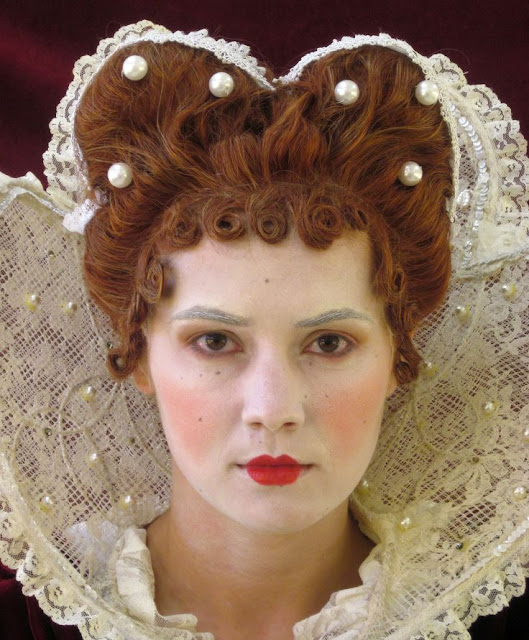For this design, again, I didn't draw the hairchart before. I was confident enough that for the modern hair task I will be inspired on the moment. But I've been so wrong, because I feel like I actually was so uninspired. In the end, I kinda liked the overall result, but I can't say that I was completely satisfied about it because I think that it somehow lost it's Elizabethan feel. I think that it turned up to be more like Geisha style rather than Elizabethan which is not what I desired. But as Sharon said at the beginning of this semester: "failure is a part of success". I wouldn't say that is a failure, but it's not what I really wanted and that's because I didn't design a haichart before so I can actually know exactly what I want to do. Now I really understand the importance of planning the designs and doing the haircharts. At least I've learned from my mistakes and in the future I'll know exactly what and why I have to plan ahead properly, rather than relying on the moment's inspiration.
I have to start managing my time and priorities better, and to stop complaining in my head that I am unefficient sometimes just because I moved into another country. It is hard indeed, all these changes, from the school system to the way people are thinking (talking, eating, working, doing whatever), being away from my family and friends, sometimes get me so confused. But I have to be strong and face those so I can become better.
If I were to do this hairstyle again, I think I would add more texture and more volume to the hair. Maybe some crimping in the front and some curls at the back... but certainly I'd draw haircharts for it so I can be fully prepared.
Steps for creating this look:
- Section the hair in 4 pieces. Leave the back pieces unpinned;
- Add padding in two of the sections: the second and the third (you can know which is which if you count from the front to back). To make the hair rats more stable and to add volume, backcomb the hair and then roll it on the hair rat. Try to achieve a nice, round shape;
- Style the front piece of hair in some sort of visor, just so the hair doesn't cover the forehead;
- Section again the last piece of hair, the fourth one, in 4 sections. French plait the two sections in the middle and then roll the ones on the sides between the padded sections, so you can finish the look;
- Pin everything that was not pinned before and add hairspray to set the hairstyle.
Thank you, lovely Lia, for being my gorgeous model.
After the session I've drawn the design, just in case I'll need it in the future:











































































